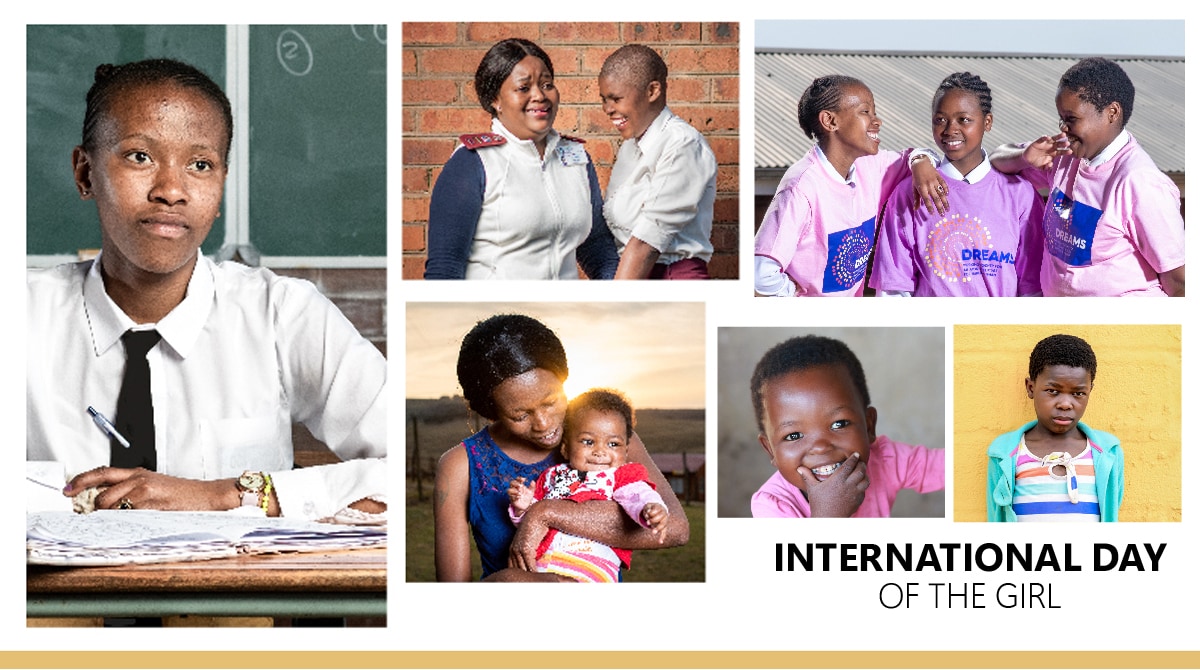At a glance
Adolescent girls bear a disproportionate burden of HIV. In 2023, an estimated 4,000 adolescent girls and young women became infected with HIV every week and only 65% of those were receiving the lifesaving treatment they needed. CDC's Division of Global HIV & TB is focused on addressing the unique challenges that girls faced when it comes to accessing HIV testing and treatment services.
Observed Annually
Oct 11, 2024
Overview

Fast Facts
- In 2023, there were an estimated 1.9 million adolescent girls and young women (ages 15-24) living with HIV globally. Of these girls, only 65% were receiving the HIV treatment they needed.
- In 2023, there were an estimated 12,000 AIDS-related deaths among girls aged 10-19 globally.
- In FY23, over 7 million girls (ages 10-19) were tested for HIV and received their results through PEPFAR.*
- PEPFAR provides lifesaving treatment to nearly 400,000 girls (ages 10-19). Of these girls, CDC provides treatment to more than half of those in care (58%).
*Note: Excludes data from Nigeria for fiscal year 2023, 4th quarter
Sources: UNAIDS, PEPFAR
Our Efforts
CDC's Division of Global HIV & TB is working on a number of fronts to make an impact in the fight against HIV among adolescent girls, including reaching them with timely HIV testing and lifesaving treatment.
Adolescent girls around the world bear a disproportionate burden of HIV, fueled by issues like stigma and discrimination, access to education, and poverty. In 2023 alone, there were an estimated 1.9 million adolescent girls and young women aged 15–24 years living with HIV worldwide – with 4,000 new HIV infections every week. Current efforts to reach these girls with HIV testing and treatment are lagging, causing many to go without the care that they need. Only 65% of girls living with HIV worldwide (ages 10-19) were receiving treatment in 2023, and there were an estimated 12,000 AIDS-related deaths.
But it doesn't have to be this way.
CDC, through the U.S. President's Emergency Plan for AIDS Relief (PEPFAR), is providing adolescent girls living with HIV around the world the services they need. These programs have played a crucial role in addressing existing gaps and providing access to timely HIV testing and lifesaving HIV treatment for adolescent girls worldwide.
Through interventions carefully tailored to address the needs of adolescent girls, PEPFAR reached over 7 million adolescent girls with HIV testing in fiscal year 2023* and supported the distribution of over 650,000 HIV self-test kits to make testing more accessible. PEPFAR programs currently provide lifesaving HIV treatment to nearly 400,000 girls ages 10-19 worldwide. Of these girls, CDC provides treatment to more than half of those in care (58%).
Despite this progress, significant barriers remain in reaching adolescent girls with lifesaving testing and treatment services. CDC and the global community must unite to address existing gaps and amplify the reach of current HIV programs that focus on timely HIV testing, linkage to care, and continuation of support services throughout adolescence and into adulthood. Further emphasis is also needed to interrupt the societal and cultural barriers that continue to fuel the epidemic among girls.
An investment in girls is an investment in the future.
*Note: Excludes data from Nigeria for fiscal year 2023, 4th quarter
Sources: UNAIDS, UNICEF, PEPFAR
